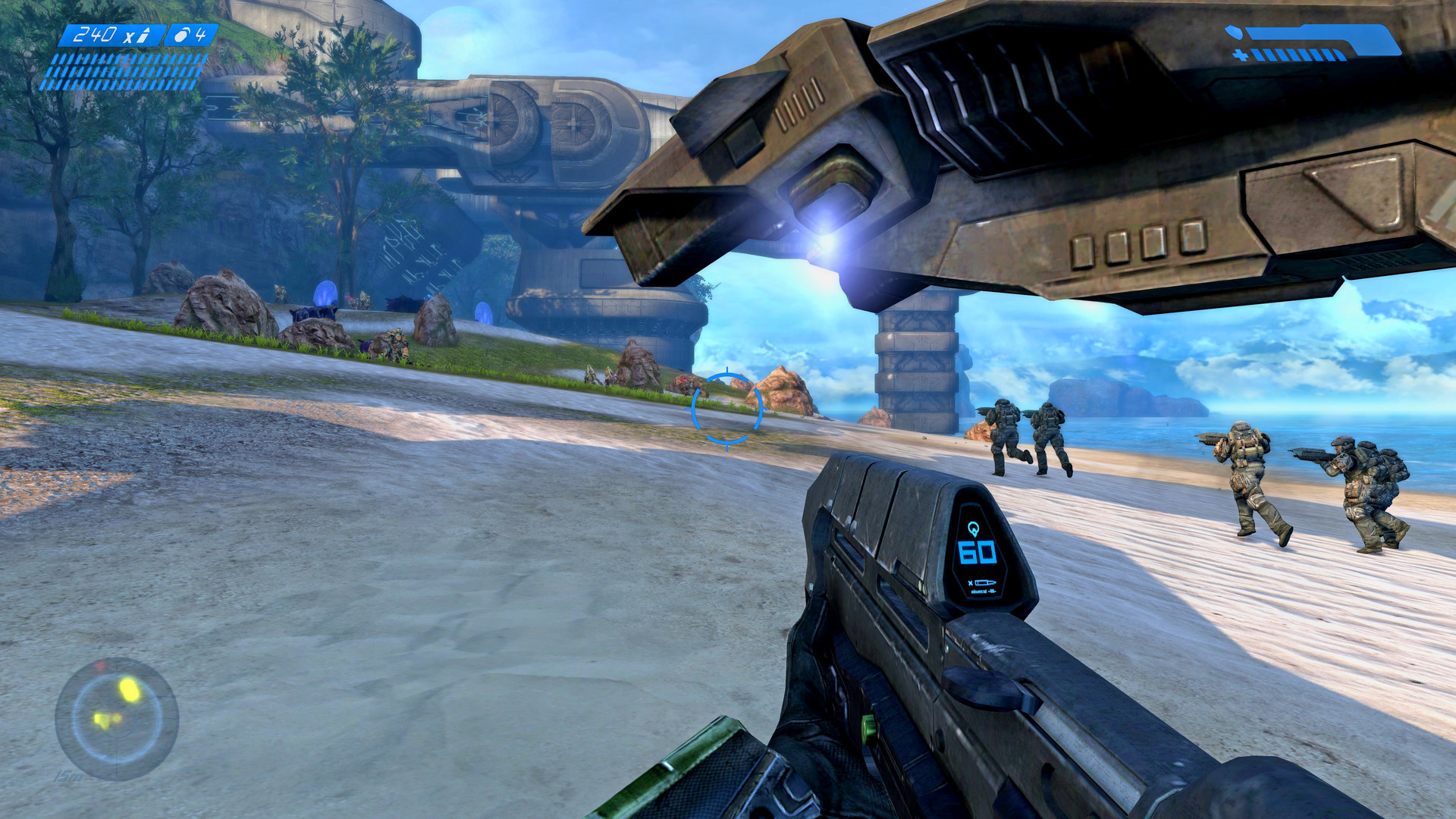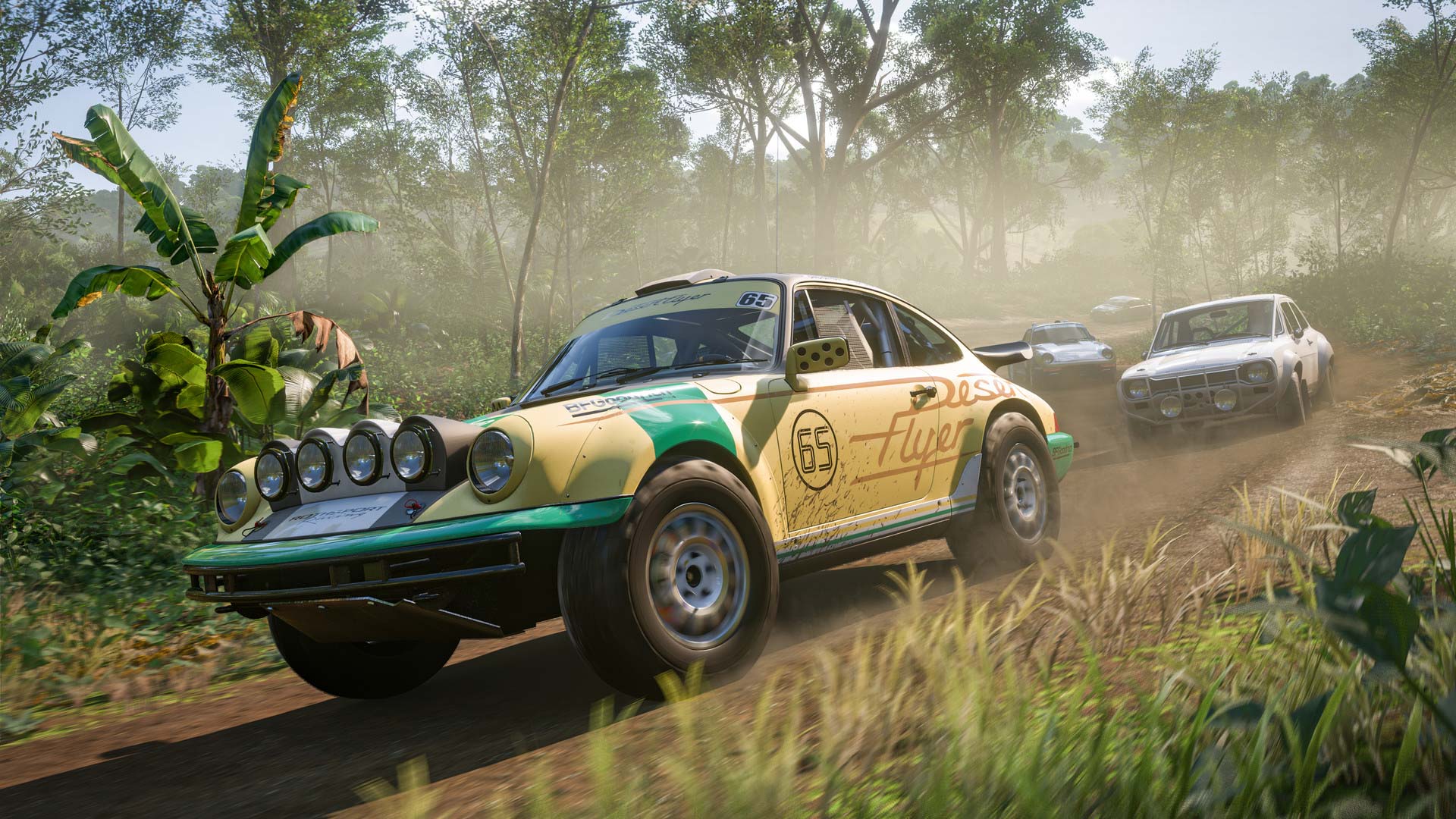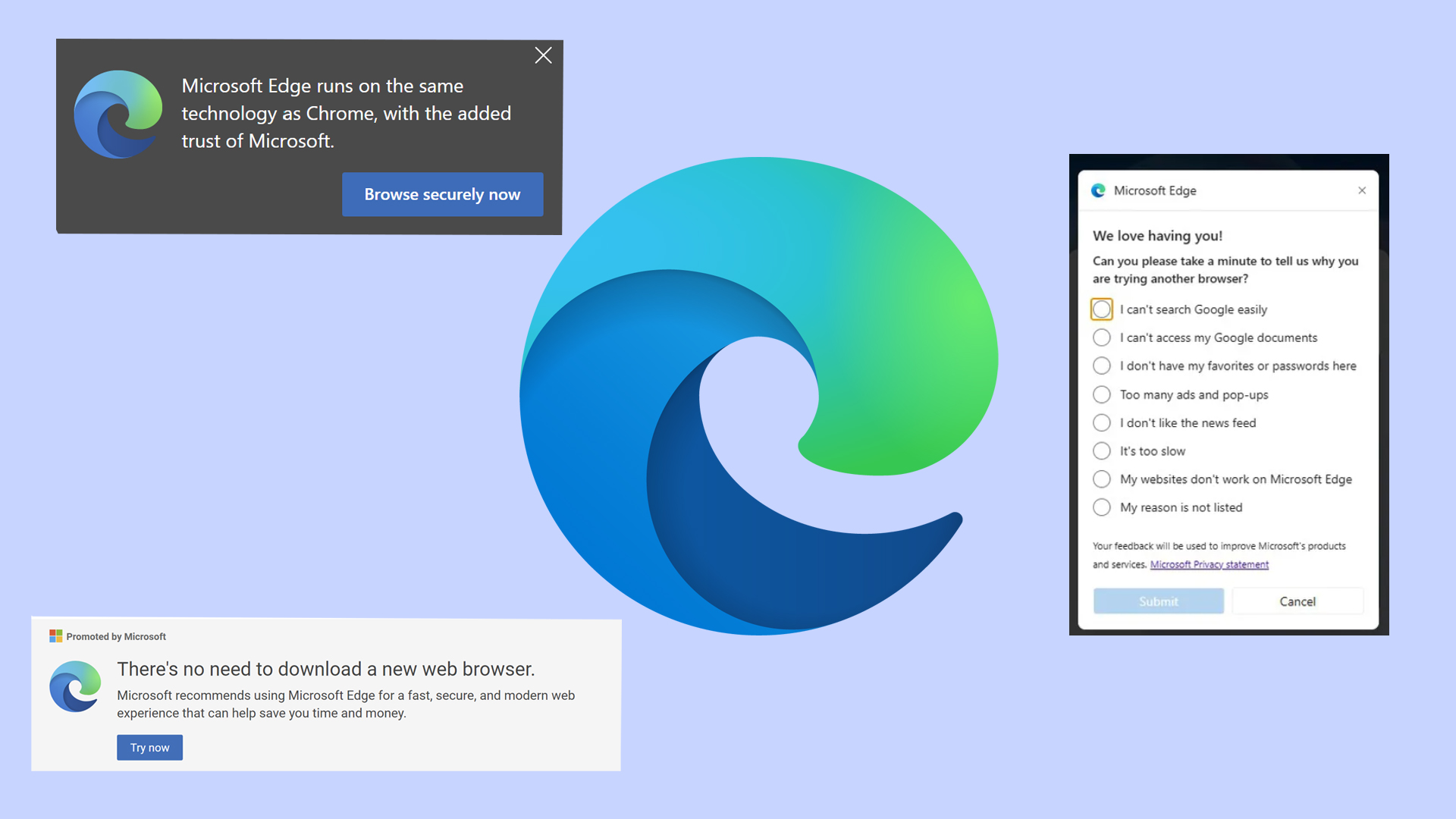Microsoft turns 50: 25 best and worst moments
We've come a long way since Clippy

- Windows 95
- Microsoft gives Apple $150M
- Halo
- Xbox 360 launch party
- Clippy
- Metro Design language
- Internet Explorer
- Windows Hello
- Zune
- "Developers! Developers! Developers!"
- 3D Pinball
- Forza Horizon 5
- Microsoft Kin
- Windows Vista
- Microsoft Edge
- Windows 8
- Microsoft Surface RT
- Windows RT
- Xbox Kinect
- Xbox One reveal
- Game for Windows Live
- Windows Phone
- Comic Sans
- Surface Neo
- United States v. Microsoft Corp
Microsoft celebrates its 50th anniversary this week, and to mark the occasion the company hosted a special Copilot-focused event at its headquarters in Redmond.
It's notable that Microsoft marked its 50th by talking up Copilot, the AI-enhanced assistant now built into Windows, Word, PowerPoint and other Microsoft products.
The company got its start in the '70s selling BASIC interpreters for the Altair 8800 that let owners program in BASIC instead of the 8800's native machine code; now, 50 years later, it's still selling software aimed at making it easier to use your PC.
The difference is, nowadays, nobody needs to know how to code in order to buy a PC and use it at home. Microsoft and its flagship Windows operating system have been at the vanguard of the home computing revolution, for better and for worse, and much of our modern tech industry owes its shape to Microsoft's 50 years of triumph and tribulations.
With that in mind, we thought it would be fun to take this opportunity to look back at the best and worst moments of Microsoft's 50-year run.
The best moments of Microsoft's first 50 years
Windows 95

I don't know about you, but I loved Windows 95. I was maybe ten years old when it shipped in the summer of 1995, and back then the arrival of the Start button was a revelation.
It's hard to remember now, but there was a time when Windows didn't have a taskbar, a Start button or any desktop shortcuts. These innovations were all popularized by Windows 95, and if they were a bit too reminiscent of Apple's macOS, well, that controversy was put to bed in '97 when Microsoft bailed Apple out of financial trouble.
Sign up to get the BEST of Tom's Guide direct to your inbox.
Get instant access to breaking news, the hottest reviews, great deals and helpful tips.
Love it or hate it, Windows 95 set the tone for the 30 years of Windows to come. Microsoft may move the taskbar and Start menu around a bit, but it has yet to surpass the fundamental design elements it established 30 years ago.
Microsoft invests $150 million in Apple

The August 1997 issue of TIME Magazine looks a lot different than what you see on newsstands today because it shows something that feels rare these days: the leader of a powerful company expressing gratitude and humbly asking for help.
However the photographers staged it, though the cover was based on a true story: Steve Jobs reached out to Microsoft cofounder Bill Gates in 1997 to ask for help. Apple had been on a losing run and needed money bad, or it was in danger of shuttering.
Apple was also engaged in a lawsuit against Microsoft at the time for (among other things) allegedly ripping off macOS with the look and feel of Windows. So when Jobs got in touch with Gates, he was able to negotiate a $150 million investment for Apple (along with the promise of Microsoft supporting Office for Mac for at least a few years) in return for non-voting shares in Apple and an agreement that the company would drop its lawsuit against Microsoft.
Nearly 30 years later, it's remarkable to think Apple (and the iPhone, the iPad and the best MacBooks yet) might not exist today if not for Microsoft and Gates' investment in the '90s.
Halo

Now, Microsoft didn't invent Halo—Bungie did.
But in 1999 Microsoft swooped in to buy Bungie just in time to lock down Halo as an exclusive launch game for its first game console, the Xbox. That must have really peeved the folks at Apple, since Bungie had first unveiled Halo at Macworld Expo 1999 as a game for Mac and Windows PCs.
Whatever you think of Microsoft's business strategies, it's hard to argue this purchase didn't define Microsoft's game business for decades. Halo and its Master Chief protagonist were treated like the de facto mascot of the Xbox business, and while the games haven't been as popular lately as they were in their heyday, they remain one of Microsoft's most popular and enduring franchises.
Of course, Bungie bought its freedom from Microsoft in 2007 and has been deeply focused on its Destiny games for years now. But after Sony acquired Bungie for $6.3 billion in 2022 it remains unclear what the company will work on next.
Xbox 360 launch party

Remember console launch events?
If you're old enough you might remember the fervor that surrounded the Xbox 360's launch in late 2005. Microsoft threw two separate parties in November to hype up the console launch: a small, posh gathering for celebrities in Beverly Hills and a big launch event in the Palmdale desert for the rest of us.
A cavalcade of fans descended on the desert hangar for the Xbox 360 Zero Hour launch event, and lots of photos were shared of a huge dusty hangar filled with TV screens ringed by bean bag chairs.
I think what most of us remember from this shindig now though is all the photos of celebrities like Bow Wow, Justin Timberlake and Snoop Dogg playing launch games on the Xbox 360. It was an extravagant event of the type we rarely see any more, and one of the most memorable moments in Microsoft's history.
Clippy

Clippy is a good thing, right?
I'm still on the fence, I suppose, but I can't argue with the cultural staying power of this anthropomorphic paperclip. We first met Clippy back in 1997 as Clippet, the animated assistant for Microsoft Office.
The little animated paperclip was one of many assistants you could enable when using Microsoft Office products, but he proved to be the one that most people grew to love to hate for constantly nagging you with suggestions like "it looks like you're writing a letter. Would you like help?"
People grew so fond of hating on Clippit/Clippy that four years later Microsoft integrated the death of Clippy into its marketing for Office XP 2001. The company made a point of saying its new productivity software was so easy to use you wouldn't need to be bothered by Clippy, and the character faded into the realm of myth and memes.
Fast forward to today though and Microsoft continues to bring Clippy back to promote its other services. A few years ago a Clippy sticker pack was added to Microsoft Teams, and Microsoft released a commemorative wallpaper (above) featuring Clippy.
Could the little paperclip that won't die return one day as an actually useful AI-powered assistant? We'll have to wait and see!
Metro Design language

If you're not familiar with Metro, I forgive you—it's the sort of thing only tech nerds cared about when Microsoft debuted new interfaces sporting the Metro design language on the Zune and the Windows Phone 7.
If you missed experiencing the tile-centric Metro design language on Windows Phone, you might remember it better from the interface of the Xbox 360 and Windows 8.
I first encountered it with Windows 8, and I have to admit I kind of loved the colorful, tile-based design language. It almost convinced me to ditch my iPhone for a Windows phone, and maybe if I had we'd still have Windows phones today. C'est la vie!
Internet Explorer

It's hard to remember these days, but there was a time when Microsoft's Internet Explorer web browser was a big deal.
Admittedly, for me that time was the late '90s, but what a time they were! I was a kid and it felt like if you opened a web browser, you could find all sorts of novel and interesting things—you just had to know where to look.
It also felt like Internet Explorer was everywhere, too, which makes sense since Microsoft edged out Netscape in the browser market by making Internet Explorer the de facto browser that came with Windows. The rest is history, and nowadays so is Internet Explorer—Microsoft ended support for it in 2022 in favor of its new browser, Microsoft Edge.
Windows Hello

If you're not familiar, Windows Hello is Microsoft's branding for the suite of biometric authentication features built into Windows. And while I totally understand if you're not a fan of Microsoft logging your fingerprint or a scan of your face, I can't pretend it hasn't been a game-changer for Windows users.
I know because I've been using Windows PCs for over thirty years, and I've been reviewing them professionally for over a decade. And while I regularly disable Windows Hello when reviewing laptops for convenience reasons, for machines I own, I value the option to be able to log in with just a look or a finger press.
Zune

If you don't remember the Zune, you weren't paying much attention to Microsoft in the early 2000s. And maybe that's a good thing, because a lot of customers were underwhelmed by the portable music player meant to be Microsoft's iPod competitor.
While it started as a line of portable media players (designed in conjunction with Toshiba), Microsoft eventually expanded the brand with a Zune music subscription service, a video distribution service and Zune software and services for Windows and the Xbox 360.
It was quite a time to be alive and listening to music, and I'm sure I saw a Zune or two on my college campus. But by 2011 the writing was on the wall, and by 2012 Microsoft shut down all things Zune and rebranded its media distribution services with Xbox branding.
"Developers! Developers! Developers!"
Former Microsoft chief Steve Ballmer went viral '90s style for his sweaty paean to developers onstage at a Microsoft event, and decades later it's still one of the most memorable moments in the company's history.
Ballmer was well-known for his passion and energy on the job, and a cursory Google search will turn up at least a few videos of him strutting, bouncing and shouting during company presentations. But this clip of him (captured during a 1999 NET Conference) screaming about the importance of third-party developers remains The Clip people share the most about Ballmer and Microsoft, over 25 years later.
3D Pinball

If you were using Windows 95 back in the day you might remember the Microsoft Plus! pack, a $49 add-on pack for Windows 95 that came with new software and utilities, new features for Windows (like themes!) and, most importantly, a specially licensed version of the Space Cadet digital pinball table from Cinematronics' Full Tilt! Pinball.
Technically Full Tilt! Pinball included 3 different pinball tables, but you could be forgiven for not knowing that because so many of us only ever played this game as "3D Pinball for Windows - Space Cadet", so we only ever played the Space Cadet table.
And you know what, it was great! Here at Tom's Guide some of us immediately remembered "3D Pinball for Windows" with remarkable fondness, so imagine my surprise when I did some digging and found that not only did Full Tilt include the Space Cadet table, it also offered Dragon's Keep and Skulduggery tables!
These games are no longer easily available to purchase, but with some digging you can find free recreations online or on mobile app stores if you want to indulge in a bit of nostalgic fun.
Forza Horizon 5

Look, some of us just really love Forza.
Personally I think I enjoyed Turn 10 Studios' Forza Horizon 4 more simply for its countryside setting, but I've played a ton of Forza Horizon 5 and I think it's easily one of the best things coming out of Microsoft right now.
If you haven't played it yet, what sets Forza Horizon 5 apart from most other racing games is its open-ended design. You choose your car and race around a fictionalized digital Mexico exploring the terrain, finding upgrades and entering races at your own pace.
Personally, Forza Horizon reignited my love of driving a manual car such that when it was time for me to buy a new ride after 10+ years of going car-free, I started test-driving cars in Forza before I booked appointments at used car lots. It probably wasn't the most accurate way to get a feel for a car, but the steering and shifting feel so good in Forza that I genuinely felt like I was getting a feel for the real thing. What a game.
The worst moments of Microsoft's 50 years
Microsoft Kin One and Kin Two smartphones

Microsoft has tried and failed several times to launch a successful phone business, but the Kin One and Kin Two were perhaps the worst examples.
Way back in April 2010 the company unveiled these two Kin smartphones simultaneously and promoted them as "social phones" that were focused on social networking. Their home screen was the "Loop", which aggregated your social media feeds, and the phones also automatically backed up your messages, photos and videos to a Kin Studio online platform where you could review them on other platforms.
The Kin Two (pictured) was a bigger and more capable version of the Kin One, with a better camera and more storage, but neither phone sold well and Microsoft discontinued them both within two months of launch.
Gone too soon? Maybe not—because Verizon brought them back on the market with slightly different names, less features and a lower price. But within a year these new models (branded Kin OneM and Kin TwoM) were also off the market, and we've not seen the company touch the Kin brand since.
Windows Vista

Microsoft dropped Vista on us in 2007 as the sequel to Windows XP, and it didn't go as well as the company hoped.
Sure, Vista introduced some useful upgrades over XP, including DirectX 10, Windows Speech Recognition and that glassy-looking Aero design language. Heck, I really liked the look of it after XP.
But the cost for many early adopters was worse game performance than XP along with a metric ton of annoying notifications from the then-new User Account Control security feature.
Microsoft eventually fixed some of the flaws in Vista by releasing Windows Vista Service Pack 1 a year later, but even that rollout was plagued by technical issues.
Microsoft Edge

I don't actually have a problem with the performance of Microsoft Edge. I think it's a completely serviceable web browser, and Microsoft makes it pretty easy to bring your bookmarks and other data into Edge from Google Chrome and other browsers.
No, I have a problem with how desperate and needy Microsoft is willing to appear in order to try and keep people from downloading other browsers—and specifically Chrome.
If you haven't noticed this, try downloading a copy of Chrome using Edge. I do this basically every week when I'm setting up a new laptop or desktop for review, and every time I have to close at least one nagging notification from Edge begging me not to stop using it. Not only do they not keep me using Edge, they actively make me want to stop using it because developers waste time coding nagging pop-ups into it instead of working to improve the browser.
Windows 8

When Windows 8 debuted in 2012 Microsoft touted it as the most touch-friendly Windows yet and honestly, it was—but so few of us enjoyed touching it that it was hard to feel excited about using Windows during this dark period.
Of course Windows 8 brought us a lot of new things we now think of as integral to the operating system, including the Microsoft Defender antivirus, OneDrive (then branded SkyDrive) and a Microsoft Store full of Windows apps.
But they were a lot less useful back then, and Microsoft reportedly sold far fewer Windows 8 licenses at launch than it expected. The company tried to make amends by releasing Windows 8.1 a year later with some much-needed improvements (including new options to customize the Start menu, which I hated), but it wasn't enough to redeem this disappointing OS.
Microsoft Surface RT

These days Microsoft's Surface laptops and tablets are pretty great for getting things done on the go. But when the original Surface launched in 2012, it was a big disappointment.
Much like the Zune, the Surface was initially pitched as a competitor to a popular Apple product: the iPad. The first Surface was designed in-house by Microsoft and arrived running Windows RT, so it became common to refer to this model as the Surface RT.
I'll hold my thoughts on Windows RT for the next entry, but even if it had arrived running a different version of Windows I doubt the first Surface would have been a success. While I and many others loved the design, the Nvidia Tegra 3 T30 chip and 2GB of RAM in the Surface RT just weren't enough to run Windows RT or many programs very well.
Microsoft eventually cut the price of the Surface RT a year after launch, but not before taking almost $1 billion in losses on the device. But the company didn't give up on the brand, and these days Surface hardware (including my favorite, the Surface Laptop Studio 2) is actually pretty capable.
Windows RT

Windows RT was originally named Windows on Arm, for good reason: it was a simplified version of Windows 8 designed to run on Arm-based chipsets.
Microsoft launched it in 2012 alongside Windows 8, and the original Surface was such a prominent flagship for the OS that we all started calling it the Surface RT. The problem is, Windows RT came with a lot of limitations that made it ideal for putting on a kid's tablet but terrible for a power user.
The UEFI Secure Boot safeguard was permanently enabled in Windows RT, for example, which makes it impossible to install other operating systems on the device. And the OS initially did not ship with support for Microsoft Outlook, though that was fixed with an update a year later.
But the biggest failure of Windows RT was that it was limited to Arm-based devices at a time when anyone shopping for a portable PC could pretty easily find a more capable Intel-based device for the same price—and those devices could run a full version of Windows 8.
Of course, these days Windows 11 not only runs on Arm, it runs great, helping the best Windows laptops enjoy the battery-sipping benefits of an Arm-based Snapdragon chipset while still taking full advantage of Windows' features. But to get here, we had to go through the dark days of Windows RT.
Xbox Kinect

When Microsoft brought Steven Spielberg onstage during its E3 2009 press conference to talk up the game-changing potential of "Project Natal", we listened.
But when the Xbox 360 peripheral debuted a year later as the Xbox Kinect, it proved to be a lot less reliable and capable than Microsoft promised. Sure, it was fun to mess around in the Kinect Adventures pack-in game, and some super-fun uses of the tech were implemented in games like Fruit Ninja and Gunslinger.
And of course, who can forget Kinect Star Wars' cover of Jason Derulo's "Ridin' Solo"?
But when Microsoft unveiled a better Kinect 2.0 alongside the Xbox One and first claimed, then backtracked that it would be required in order to use the console, the writing was on the wall.
A Kinect was still included in every Xbox One box, but developer support dried up, good Kinect games stopped showing up on store shelves and by 2017 the innovative peripheral was scrapped entirely.
Xbox One reveal

Speaking of the death of the Kinect, let's revisit the Xbox One launch.
At the time I thought for sure it would be Microsoft's most confusingly-named console, but that was before we met the Xbox Series S and Series X. Many of us in the press were also confused by Microsoft's big unveiling of the Xbox One in 2013, when then-Microsoft exec Don Mattrick talked it up as your all-in-one living room entertainment device.
Sure, games were part of the plan, but Mattrick leaned so heavily into talking up the console's HDMI pass-through port and functionality as a TV entertainment center that many Xbox fans thought the company had forsaken the business of making games in favor of making a set-top box with an Xbox logo.
The company responded to the negative reception of the Xbox One by talking up all the games slated to launch on the system and promising not to require the afore-mentioned Kinect pack-in in order to use the console, but the damage was done and Mattrick left the company later that year.
Game for Windows Live

Games for Windows Live was such a disappointment.
I was there when Microsoft launched it in 2007 as Windows' answer to the Xbox Live service, and while it was neat to be able to log into your Xbox Live account on your Windows PC it rarely brought much benefit.
Sure, in some Windows Live games (like Fallout 3) you could log in with your Xbox account, then use console commands to cheat your way to getting all the game's achievements (and the accompanying 1,000 Gamerscore points) in seconds. But in many games, GFWL felt like an unnecessary addition that was a hassle to deal with and an annoyance when Microsoft finally stopped supporting it.
Of course, it took the company ages to admit that it was no longer doing anything with the service and longer still to officially wind it down. But by 2018 you could no longer buy games on the Games for Windows Live Marketplace, and by 2022 it was no longer functioning at all.
Windows Phone

Microsoft has tried and failed to launch a lot of mobile products, but perhaps none are closer to my heart than Windows Phone.
This mobile operating system from Microsoft launched in 2010 as Windows Phone 7, and it brought that colorful tile-centric Metro design language to phones from the likes of HTC and LG.
There were some real issues and limitations with the OS, but Microsoft worked hard to improve it and managed to launch Windows Phone 8 and Windows Phone 10 on all sorts of phones, most notably Nokia's Lumia line.
The partnership was apparently so critical that Microsoft bought Nokia's mobile phone business in 2013 for over $7 billion. But Windows Phones failed to gain enough traction in the market to meaningfully compete with Android and Apple phones, and by 2017 Microsoft had given up on Windows Phone. Gone too soon!
Comic Sans

Microsoft is responsible for a fair few fonts, but for my money none have done more damage to society at large than Comic Sans MS.
Look, I love a funny sign as much as the next guy. But when former Microsoft staffer Vincent Connare designed Comic Sans in 1994 I can't imagine he knew what he was about to unleash.
The font debuted in the same Microsoft Plus! for Windows 95 add-on pack that brought us 3D Pinball for Windows - Space Cadet, which gives you a sense of how momentous those old Windows update packs were. Worse, you had to pay $49 for the pack, so the first people to use Comic Sans were paying for the privilege.
Surface Neo

Back in 2019 Microsoft gave a full-throated presentation of the Surface Neo, a dual-screen Windows device that sported two 9-inch touchscreens married by a 360-degree hinge.
The Neo was supposedly going to ship in 2020 with a pen and keyboard that could magnetically attach to the device, but it never materialized. Instead, we heard constant rumors about it as Microsoft first backtracked on its 2020 release date, then reportedly pushed it into 2021 as the pandemic impacted industries worldwide.
The company did manage to release a dual-screen phone in 2020 in the form of the Microsoft Surface Duo, but it wasn't quite the dual-screen Windows tablet that the Neo was meant to be.
And it's too bad, because right now we're just starting to see companies like Asus and Lenovo ship dual-screen laptops (like the Asus Zenbook Duo) that actually feel usable and valuable, especially if you love using multiple monitors. Pour one out for the Surface Neo—you died too soon.
The United States v. Microsoft Corp ruling

I'm a '90s kid from the States, so when I was growing up I heard a lot about former (then current) U.S. Attorney General Janet Reno. And one of the big things that happened during her tenure kicked off in 1993, when the U.S. Department of Justice began investigating Microsoft for alleged antitrust violations.
The central complaint ties back to an earlier entry in this list: Internet Explorer was included with every copy of Windows sold, and that caused it to gain a large userbase very quickly and dominate competitors like Netscape Navigator.
When the case went to trial in 1998, the prosecution argued that Microsoft had effectively set up a monopoly by giving away a free copy of Internet Explorer with every copy of Windows. Microsoft argued that Internet Explorer was a feature of Windows rather than a separate program, but by 1999 the presiding judge ruled that Microsoft had effectively created a monopoly (illegal under the Sherman Antitrust Act) and by 2000 the Court was calling for the company to be broken up into separate units.
That never happened, of course, because Microsoft mounted a successful appeal and managed to assuage the court by paying settlement fees and making some key changes to its software and business practices.
Even if you don't remember this case you've probably heard about it or seen its impact, because it was a landmark antitrust ruling that continues to be cited in court cases even as the impact on Microsoft continues to influence the tech industry.
More from Tom's Guide

Alex Wawro is a lifelong tech and games enthusiast with more than a decade of experience covering both for outlets like Game Developer, Black Hat, and PC World magazine. A lifelong PC builder, he currently serves as a senior editor at Tom's Guide covering all things computing, from laptops and desktops to keyboards and mice.
You must confirm your public display name before commenting
Please logout and then login again, you will then be prompted to enter your display name.



